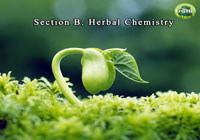The soursop is an oleaginous plant whose seeds are much feared for their toxicity. [1,2]. Its oil is extracted from the kernels using a soxhlet device using cyclohexane. The oil is then separated from the cyclohexane by rotavapor distillation at 45°C and dried in a desiccator. Its physical-chemical analysis showed a predominance of unsaturated fatty acids with a high sterol content (over 80% in β-Sitosterol and stigmasterol) determined by Gas Chromatography (GC). This oil has been tested on adults of the main mango pest, Bactrocera dorsalis, to assess its insecticidal activity. The tests were carried out by spraying the oil at three concentration levels: 0.6%, 1% and 1.5%. During the tests, the impact of sugar on the toxicity of the oil was studied by feeding our flies two honeydews made up of brewer's yeast, peptone and sugar in proportions of 1:1:5 and 1:1:0.5 respectively.
The data were analyzed using the "General Linear Model" procedure using Minitab 19.1.1 software. The factors studied were: time, number of dead insects, sex, feeding and their interactions. The results of the statistical analysis show that the spray tests give a better mortality rate when the flies' diet is 10 times less sweet.



